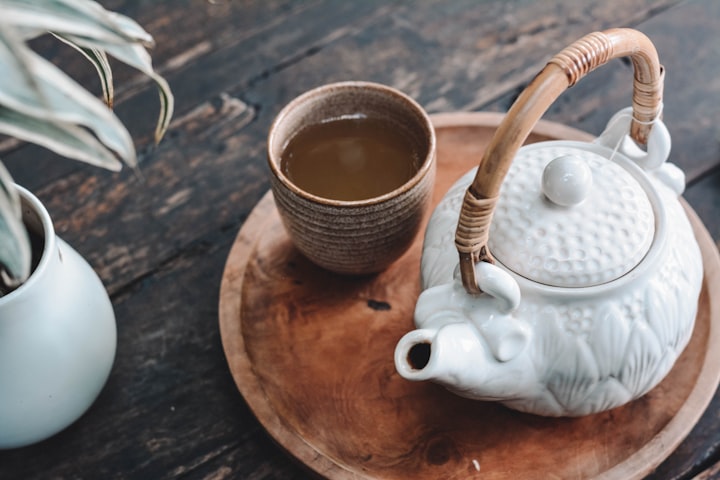The Way of the Barista
Comparing Brewing Methods

Being a barista is much more than just knowing how to brew a cup of coffee using a K-Cup. Being a barista means pouring (get it?) your heart and soul into every cup, every time you brew.
If you are a new barista or just curious about the numerous brewing methods for black coffee, this is the list for you. This article will walk you through the different methods.
I hope you find this useful. Happy brewing!
Melitta
During the 1900s, a lady from Germany named Amalie Auguste Melitta Bentz was unhappy with the taste of the coffee brewed by her percolator, as well as the grounds left behind in her cup. In search of a perfect coffee with no residue in the cup, Melitta Bentz invented the first coffee filter in 1908 by using her son's blotting paper. This is how the German Melitta company was born.
In 1968 she arrived in Brazil, where she founded a subsidiary in São Paulo and began selling paper filters and filter holders in the country.
The Melitta is currently a very popular coffee maker because its filters are very affordable for the consumer to obtain. Its extraction method is filtration by dripping and manual pouring, which will become the trend of most of these.
Kalitta
Kalita Co., the Japanese family company that owns these drippers, has been working with and manufacturing them since the 1950s.
The Kalita has a remarkably different method of extraction. Instead of dripping through a single single hole, the Kalita has a flat base with three extraction holes. This eliminates any channeling of water in the coffee bed, resulting in a very balanced cup. The grinding has the minimum contact with the filter, which allows the temperature and water dispersion to be uniform.
Its principle is filtration by dripping and manual pouring. For the Kalita, a medium-fine grind will be the ideal grind size you want to go for. It looks finer than sand, but not quite as fine as an espresso grind.
French Press
The French Press was invented in France in 1812, and patented by the Italian designer Attilio Calimani in 1929, who elaborated improvements in the following years and it was refined even further by another Italian, Faliero Bondandini
The French Press is shaped very similarly to a piston or plunger, and it slides on a cylindrical surface of glass or plastic, and it usually has a handle so that you can pour the coffee to a cup when it is considered ready. The plunger has a filter capable of letting only the water come through without coffee residue.
The extraction principle behind it is full immersion and pressure flitration, and you want your grounds to be coarse like sea salt.
V60
Hario's V60 is designed in a conical shape to allow the coffee to expand and let the water flow towards the center slowly, extending the infusion time between water and the coffee grounds.
The inner spiral-shaped ribs, which are at a 60° angle, achieve the maximum expansion of the coffee and releasing excess air. A single large hole in the bottom allows the flow of the coffee toward your cup.
The V60's exctraction principle is filtration by dripping and manual pouring. If you want to brew with a V60, you want your coffee grounds to be a medium-fine grind, almost finer than sand.
Chemex
The characteristic design of the Chemex is that of the German chemist and inventor Peter Schlumbohm, who published the patent in 1941.
The Chemex resembles a Pyrex glass flask with a wide, cone-shaped mouth at the top. A handle made of bamboo wood is placed around the neck to allow the vessel to be held when it is hot.
The extraction principle behind the Chemex is filtration by dripping and manual pouring. The ideal grind for a Chemex is a medium-coarse grind, which looks like rough sand.
AeroPress
The AeroPress coffee maker is a device to brew coffee invented in 2005 by the American inventor Alan Adler. Its structure is formed by two plastic cylinders that together work as a syringe that introduces air pressure on the mixture of water and ground coffee to filter the coffee through a paper or metal filter.
To prepare the coffee, pour the previously heated water over the ground coffee, stir for a few seconds and press the plunger to filter the mixture by the force of the pressurised air.
The AeroPress is unique because its extraction principle is total immersion and pressure filtration. And the ideal grind size is undefined. The cool thing about the AeroPress is that it gives you the liberty to play around with the grind size and brew time to get different results.
Syphon
The vessel for the extraction called Vac Pot, siphon or coffee siphon was invented by Loeff of Berlin in 1830.
The siphon uses two "chambers" or containers where the pressure of steam and the vacuum produce a clean and nuanced coffee compared to drip or other extraction methods.
The water vapour from the lower container travels through a narrow tube to the upper container, which contains the coffee. When the lower container has been emptied, it is to be moved away from the heat source so that when the temperature drops, the gas contracts and a new vacuum is created. This vacuum drags the liquid back to the lower container, passing through a filter in the process to get the coffee in suspension from the top. The principle of extraction of the Siphon is total immersion and vacuum filtration.
Moka Pot
The Moka Pot is a stove-top coffee maker that brews coffee by passing boiling water pressurized by steam in a closed system through ground coffee. It’s named after the south western Yemenite city of Mocha which was said to be the major marketplace for Coffea Arabica from the 15th to the early 18th century.
The Moka Pot was invented by Luigi De Ponti. It was patented for the first time in Italy by an engineer named Alfonso Bialetti in 1933. Bialetti Industries continues to produce the same model for the item under the name “Moka Express”. Since its invention, many models have come out.
The Moka Pot's extraction principle is filtration by pressure, and the best grind size for the Moka Pot is a finer grind, like the consistency of table salt.
Clever Dripper
The Clever Coffee Dripper offers the easiest way to prepare a cup of coffee without bitterness or extra sediment like you could find in a French Press, with a good body, sweetness and low acidity.To brew a cup, all you need to do is add the coffee and the hot water, stir and let the infusion happen.
The closing valve system allows the coffee to settle naturally in the lower part of the Clever. When placing the vessel on a cup, the system releases the coffee quickly and when lifted again, the system stops the flow automatically.
The Clever Coffee Dripper's extraction principle is total immersion and filtration by dripping. The ideal grind for a Clever Dripper is a medium-coarse grind, but remember that the coarser you go with your grind, the shorter the brewing time should be.
About the Creator
Diego Estevez
Hi, all! I'm Diego, a writer set to unleash storytelling magic. Join me as we explore emotions and new worlds. You, dear reader, are vital to this journey. Immerse, feel and experience my tales. Let's embark on a literary escapade!






Comments (1)
Very informative and helpful. I have been researching for a while and this is the most concise list of historical brewing information I have found online!